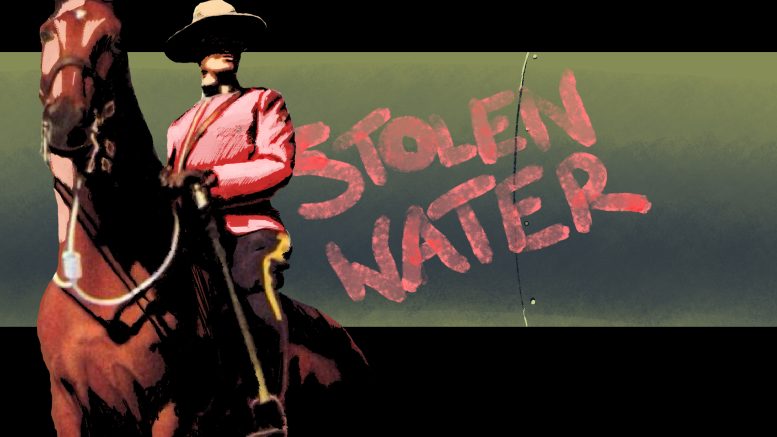Colonization never ended in Canada. Depending on who you are, that’s either a controversial statement or an incredibly obvious one.
When I say this, I am not explicitly referring to the continued presence of settlers in Canada as ongoing colonization. Rather, I am referring to the continued exploitation of land and resources.
The clearest example of exploitation of the land in Winnipeg is where the city gets its water supply. Winnipeg, for those who don’t know, has taken all of its drinking water from Shoal Lake since 1919.
Shoal Lake is located along the reserve lands of Shoal Lake 40, an Ojibway First Nation. In order to build the aqueduct that carried Winnipeg’s water, the city stole 3,000 acres and isolated the First Nation from mainland Canada by building a canal through reserve lands.
Winnipeg, by its own admission, has never paid for this water and never actually negotiated the surrender of the water with Shoal Lake 40. In fact, an agreement with Shoal Lake 40 was not made until 1989, a full 70 years after Winnipeg began taking all the water the city could drink. This sounds bad, but it gets worse, don’t worry.
Between 1997 and 2021, the community of Shoal Lake 40 was under a boil water advisory. While hundreds of thousands of Winnipeggers enjoyed fresh clean drinking water, the very people Winnipeg exploited — and continues to exploit — were forced to boil water anytime they wanted a glass of clean water. In fact, at least three First Nations in Manitoba are still under long term water advisories: Mathias Colomb Cree Nation, Shamattawa First Nation and Tataskweyak Cree Nation.
When Winnipeg was thirsty, a $17 million aqueduct was built, which amounts to roughly $283 million today when adjusted for inflation. However, the same investment is not made in First Nations. I will give credit where credit is due, the situation has improved. According to the government of Canada, at least 144 boil water advisories have been lifted. However, 28 advisories still remain in effect across the country. There is no excuse for this.
In 2010, the United Nations recognized access to clean drinking water as a human right. Water as a human right apparently doesn’t carry over to Canada.
Water isn’t the only resource being illicitly extracted from First Nations in this country, and resource extraction is far from a thing of the past. Ontario’s Ring of Fire mineral development region is a 5,000 square kilometre expanse. The Ring of Fire is located within Treaty 9 territory and on the traditional lands of Marten Falls First Nation. While Marten Falls is in support of the mining region, other First Nations within the region, such as Neskantaga First Nation, oppose the development.
This project is projected to make around $9.4 billion in its first 10 years with no clear amount going toward First Nations. The only money actually being provided to First Nations outside of employment is possibly somewhere within the projected two billion dollars generated for government bodies.
By the Ontario Chamber of Commerce’s own admission, there is “confusion” on the level of responsibilities for the business and government regarding this project’s impact on First Nations communities. The fact of the matter is that the mine is being built on traditional territories and engages in resource extraction on treaty land. The entire Ring of Fire development project is another example of blatant colonial exploitation of traditional Indigenous lands. Resource extraction is a complicated topic, especially when it takes place on traditional lands. However, if resource extraction absolutely must take place, it must be with the consent and inclusion of First Nations or it shouldn’t take place at all.
The second example is less of a resource extraction issue and more of a transportation issue. The Coastal GasLink pipeline’s construction has been opposed by thousands of protestors — both Indigenous and non-Indigenous — along with the Hereditary Chiefs of the Wet’suwet’en people. Yet, Coastal GasLink’s official website is bold enough to make the claim that it engages in “true partnership with Indigenous communities.”
Coastal GasLink never obtained consent from the traditional leaders of the Wet’suwet’en, only the elected band council whose powers are derived from the Indian Act. Since the opposition to this pipeline there have been videos posted to various news sources, like CBC and Democracy Now! showing RCMP officers arresting and removing land defenders from their traditional territories. These attacks are disturbing acts of colonial violence which ultimately service Coastal GasLink.
When Canadian corporations can build massive development projects on treaty land with massive projected profits, especially without the consent from the First Nations involved, colonization has clearly never ended.
Colonization is not a thing of the past. Colonization is a thing of the present, and from what it looks like, the future. Winnipeg continues to enjoy fresh water from Shoal Lake while First Nations around the province go without clean water. Mining corporations like Coastal GasLink and those associated with Ring of Fire continue to profit handsomely off of Indigenous lands.
Things aren’t hopeless, of course. There are still land defenders putting up a resistance to colonial violence and there are people like you who can do something. If this article makes you angry or upset, that is a good thing. This should make you angry. Wherever possible, educate yourself, speak out against colonial bullshit like this and support the Indigenous people doing something about it.


